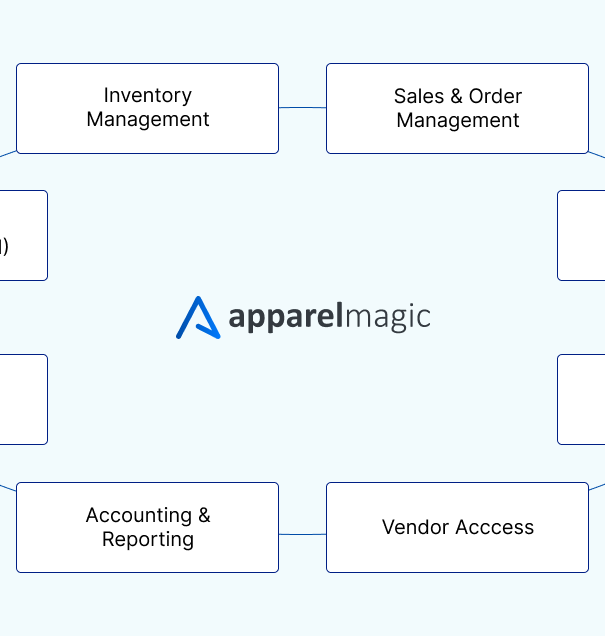Retail management involves taking responsibility for the successful running of a store. This means that retail managers are responsible for every aspect of the day-to-day operation and supervision of retail outlets, including staff, sales, resources, and inventory management. In addition to this, you’ll need to stay on top of your warehouse inventory. Finally, the list of your responsibilities might include another crucial element – retail pricing.
Intelligent retail is a crucial success factor in today’s extremely competitive and globalized retail market. Luckily, there are many mathematical retail price formulas that have been proven to work and can assist operations in determining more competitive rates.
In this post, we’re looking at how to find retail price using some of the elementary retail price formulas and evaluating some of the most commonly used pricing strategies that can help managers attract loyal customers, drive business growth, and boost profitability.

Photo by Henry & Co. on Unsplash
The Importance of Calculating Retail Price
The profitability and competitiveness of a retailer are directly impacted by price decisions. Pricing can make or break a company: setting prices that are too high will prevent you from competing with other businesses, whereas if the price is too low, you cannot make a profit.
So, you’d expect that by this point, retailers would have adopted some very clever pricing strategies. Sadly, that’s not the case. According to one study, only 12% of organizations cited price as the primary factor in predicting future profit growth. This is probably the reason why just around half of the businesses have a pricing plan in place. Additionally, those tactics may not be that advanced. According to the Professional Pricing Society, 30% of retail merchants simply match the prices of their closest competitors when pricing new products.
What does this mean for you? It means that learning how to calculate retail price will have an impact on your retail store’s competitiveness and profitability. Pricing is therefore one of the most crucial choices a retail manager must make.
How to Calculate Retail Price Using a Retail Price Formula
Retailers can get a competitive edge by using some straightforward methods to set prices that suit their particular requirements. Here is a list of the 15 most commonly used retail price formulas:
- Cost-plus is the most commonly used retail price formula which involves assessing your cost of products and adding that to your goal markup, i.e. the percentage added to the cost to obtain the retail price.
- Contribution margin represents the incremental money generated for each unit sold after deducting the variable portion of the company’s costs. It is calculated as the selling price per unit minus the variable cost per unit.
- Break-even analysis is a calculation that weighs the costs of a new product or service against the unit selling price to determine the point at which you’ll break even. To calculate the break-even point, use the following formula:
break-even point = fixed costs ÷ (sales price – variable costs)
- Gross margin equates to net sales minus the cost of products sold.
- Gross margin return on investment (GMROI) analyzes a company’s ability to generate profits over the cost of its inventory. It is calculated by dividing the gross margin by the average inventory cost.
- Cost of goods sold is the total amount your company paid as a cost directly related to the sale of goods. It is calculated by adding purchases to the beginning inventory and subtracting the ending inventory for the same period.
- Inventory turnover is the rate that inventory stock is used, replaced, or sold. It is calculated by dividing the cost of goods by the average inventory.
- Profit margin percentage. To calculate profit margin percentage, start out with your gross profit, i.e. the difference between the revenue and the COGS. Then, find the percentage of the revenue by dividing your gross profit by revenue and multiplying the total by 100.
- Initial markup is the difference between what an item costs from the supplier and what the retail price is that customers pay. The initial markup percentage is calculated using the following formula:
[(retail price – cost) / retail price] x 100
- Maintained markup is the difference between the cost of goods and the actual retail price of those goods when sold.
- Quick ratio is calculated by dividing an organization’s cash and accounts receivable by its current liabilities.
- Open-to-buy (OTB) is calculated as follows: planned sales + planned markdowns + planned end-of-month inventory – beginning-of-month inventory.
- Reductions are the difference between the product’s original retail value and its final sales value. This difference can result from three major factors: shortages, mark-downs, and discounts.
- Stock-to-sales ratio measures the value of your inventory against the value of sales for a certain period of time. It can be calculated with the following formula:
average stock value / net sales value
- Sell-through rate is the percentage of a company’s inventory sold to consumers. You can calculate it by dividing the number of inventory units sold by the number of units received.
6 Common Retail Pricing Strategies
Once you’ve got the above formulas figured out, you will want to select a product pricing strategy. Some of the most common pricing strategies:
Keystone pricing
Basically, keystone pricing is when a retailer sets a retail price for a good profit margin by doubling the wholesale price they paid for the product. Although keystone pricing used to be the standard, more fierce competition and the constantly shifting retail environment have led some businesses to switch to other strategies.
With keystone pricing, you can undervalue your products if they have a low turnover rate, high shipping, and handling expenses, or are special or hard to get in some way. On the other hand, it may be more difficult to use keystone pricing if your goods are highly commoditized and are available elsewhere.
Value-based pricing
Value-based pricing is the practice of determining a product price based on what the customer thinks it is worth. Some general requirements for using this pricing method include a strong brand, high-quality, in-demand products, and innovative marketing techniques.
Value-based pricing works best in markets where a product improves a customer’s self-image or gives a special life experience. For instance, individuals frequently place a high value on premium labels that sell expensive products like Rolls Royce or Gucci. This gives them a chance to determine a product price using value-based pricing.
Discount pricing
Companies are well aware that consumers love discounts, markdowns, retail sales, and other associated promotions. This is why discounts are the most popular product pricing strategy used by 97% of sellers in all industries.
The discount pricing strategy works well for increasing foot traffic to your store and clearing out out-of-season or stale merchandise. However, if you do it too frequently, it could convey the impression that you’re a discount retailer, which might discourage potential customers from paying full price for your goods. Additionally, it has a detrimental psychological effect on how consumers perceive quality. For instance, because of the low prices, Walmart and The Dollar Store’s products are considered as being of lesser quality.

Photo by Artem Beliaikin on Unsplash
Competitor pricing
Competitor pricing, as the name of this pricing approach suggests, is deliberately setting your prices below those of your competitors while using their pricing data as a standard.
This approach works well if you can reduce costs and actively market your special pricing while negotiating a lower cost per unit with your suppliers. However, if you run a smaller business, it may be tough to maintain. You will need to sell more than your competitors because lower prices entail lower profit margins.
Price skimming
A price skimming approach is when an online retailer sets its starting price as high as its target market would bear before gradually lowering it. The company reduces the price to entice a new, more price-conscious consumer base as demand from the initial customers is met and additional competitors enter the market. Apple employs this price strategy to pay the expenses associated with creating new products like the iPhone.
Price skimming might result in significant short-term gains when a new, innovative product is introduced. It also aids in preserving a prominent brand’s reputation and drawing in devoted target customers who want to be the first to learn about or experience anything new. The strategy also functions when there are few available products. Products with high demand but low supply, for instance, may be priced higher; when supply increases, prices decrease.
However, price skimming isn’t the best marketing tactic in crowded markets, unless you have some truly exceptional characteristics that no other brand can match. If you cut the price too fast or too drastically after launch, it also encourages competition and can annoy early adopters.
Cost-plus pricing
The simplest method for determining a product’s price is cost-plus pricing, a cost-based pricing approach that’s sometimes referred to as markup pricing. You create the item, add a predetermined percentage to cover the expenditures, and then sell it for the total. The benefit of cost-plus pricing is that it is simple to understand. You already keep tabs on labor and production costs. To determine the selling price, all you have to do is raise it by a certain amount.
Cost-plus pricing can offer consistent profits if all of your costs stay the same. However, it should be noted that the strategy does not account for market factors like competition pricing or the perceived worth of the consumer.
Final Thoughts on How to Calculate Retail Price Successfully
Achieving your profit objectives requires many things, including understanding your company’s cost structure, using advanced technology like inventory management software, and learning how to find retail prices. Keep in mind that the tactics explained in this article should be employed as part of a bigger, multi-factor pricing approach rather than in isolation.
Once you have mastered the formulas, it’s time to investigate more sophisticated pricing strategies. There are numerous pricing strategies, so it could be a good idea to try a few different ones until you find the one that works best for your business.







